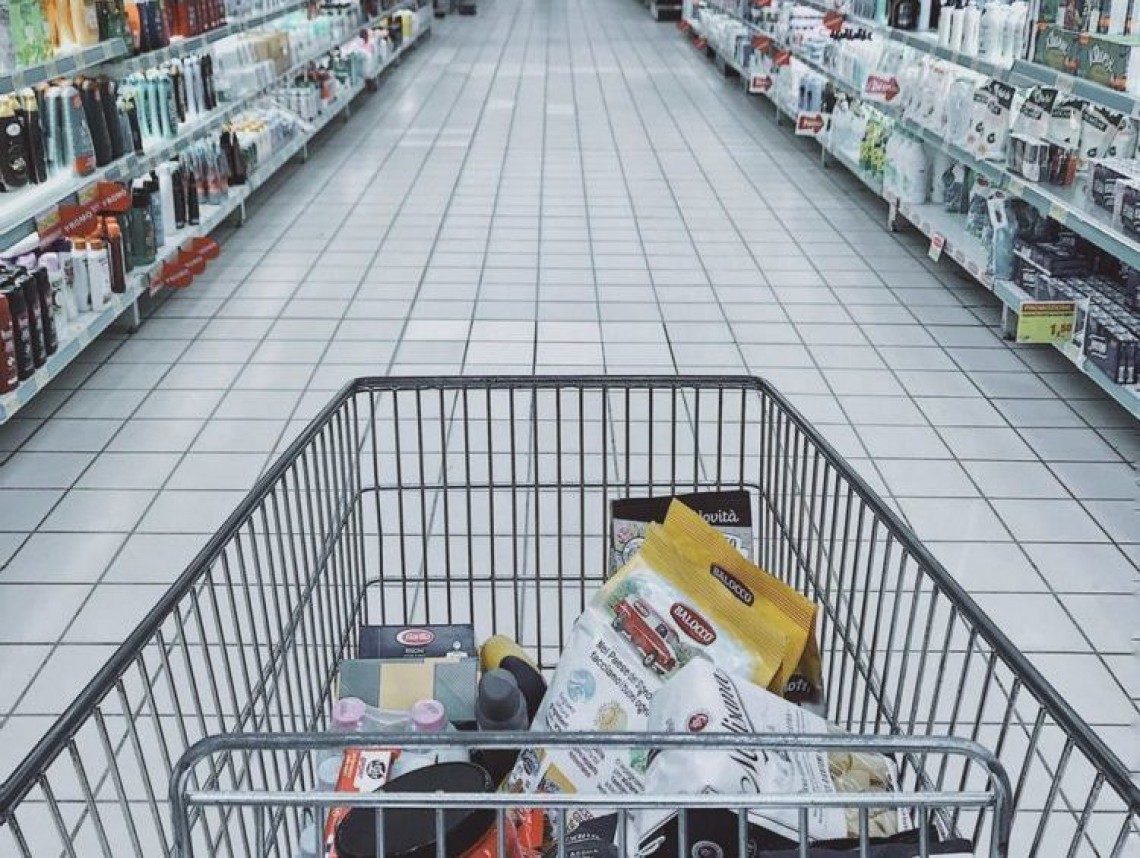
Smart Retail – Digital Transformation of Retail Business
Background
This blog is all about smart retail technology solutions to understand customer behavior, to give a better shopping experience and also to increase retail business.
Retail is going through a massive transformation in multiple fronts. Online Stores are racing ahead with several advantages compared to Offline stores. The data collected by the online stores about the buyers is becoming a huge advantage to target products and to come up with merchandise that is likely to address the general set of buyers visiting the online store.
Therefore, To compete offline stores now are going through digital transformation addressing multiple segments with mobile applications, etc.

The next phase is to get buyer patterns, similar to the online store. Offline stores have an advantage in this respect that they have real customers but there is a technology gap in a system solution to address this easily. Hence, Gyrus presents a solution that addresses this requirement by fusing information from Camera, Point of Sale (POS) and Customer Location (LOC) to enable Smart Retail Stores.
Camera-based Analytics
With the advancement of vision algorithms, cameras and the associated AI hardware provide a lot of insights about the environment. Even more, Object detection, face recognition, sentiment analysis, demographic classification algorithms matured and are being used in real-life deployments.
Furthermore, Stores can have cameras at the entrance and exit or can be in every aisle. Cameras in every aisle provide deep insights and very granular information, including sentiment analysis. However it will be very expensive to install, and maintain such setup (as every aisle will need to have cameras with their orientation monitored) The maintenance expense will be more in the long run than the installation cost. The multiple cameras also require hardware to process multiple streams such as GPU’s, Servers, etc. Cameras in every aisle can be intrusive as well.
Alternatively, Cameras at entrance and Exit can be used to identify
- Demographics of the visitor
- Rewards customer
- Frequent visitor
- Cross-check POS with checked out items.

As an added advantage, cameras can provide security and surveillance. Camera software can alert if someone enters (or is walking outside) the store with a weapon.
Point of Sale (POS)
POS systems should be able to provide information regarding the products purchased, discounts/coupons applied, loyalty rewards, etc. also, the backend software can correlate them back to the categories of the products.
Consumer Location
Wi-Fi technology introduced Fine Time Measurement (FTM) for getting more accurate location measurements. Advanced methods are layered on top such as Channel Estimate based Time of Flight measurements and Trilateration Technologies to have much-improved location metrics. Moreover, today it is conceivable to have decimeter-level (20 cm) accurate location of the user devices. The previous generation WiFi-APs used BLE, or antenna arrays for location, and dense deployment making it very expensive, while these new methods can be deployed with software running on standard WiFi AP’s.
Fusing the three vectors
Taking in data from the three technologies, offline stores provides very valuable insights at par with online stores such as heat maps below.

Certainly, based on the time spent by user at each product location, their demographics, and the reconciliation with the POS system, one can provide –
- Foot Traffic to Store Traffic rate
- Time Spent by per Aisle
- Time Spent per product section
- Conversion Ratio
- Conversion to Time Spent
- Business Lost Ratio
- Business Lost to Time Spent
- Marketability of the Merchandise
- Product placement effectiveness
- Effectiveness of discounts
- Time spent in the Mark-Down section
- Conversion ratio in the Mark-Down section
- Demographic wise statistics of Business gained/lost
- Effectiveness of loyalty program
- VIP Customer Identification
- Effectiveness of Digital Signage
- Customer-ID to online ID mapping
- Targeting advertisements
- Customer Heatmaps
- Queue Monitoring
- Zone Analysis
- People Counting
- Shopper Flow
Conclusion
Above all, the online retail companies are threatening offline stores with respect to inventory level, the margin of business, the requirement for less labor, etc. The latest battle is with respect to data about buyer profiles and patterns. Also, online stores develop rich buyer models and personas to target advertisements and provide custom merchandise to lure them to buying. Moreover, Offline stores can have similar information and can do better targeting and with new technologies as presented in this blog. However, the same level or better information can be available to the offline stores to help them compete better. A mesh of Cameras everywhere is expensive, very intrusive and might thwart some customers. Even more, Intelligently fusing the Wi-Fi sensing, POS systems with Cameras just at the entrance and exits, intelligence can be brought to offline stores at par with the online stores.
Gyrus ML/AI algorithms can be used to fuse the data and also to derive all the insights presented above.
バックグラウンド
このブログは、顧客行動を理解し、より良いショッピング体験を提供し、小売ビジネスを拡大するためのスマート小売テクノロジーソリューションに関する情報をお届けします。
小売業は、さまざまな面で大規模な変革を遂げています。 オンラインストアは、オフラインストアと比較していくつかの利点で前進しています。 オンラインストアで収集された購入者に関するデータは、商品をターゲットにし、オンラインストアにアクセスする一般的な購入者に対応する可能性のある商品を考案する上で大きな利点になりつつあります。
そのため、オフラインストアと競争するために、モバイルアプリなどで複数のセグメントに対応するデジタルトランスフォーメーションが行われています。

次のフェーズは、オンラインストアと同様に、購入者パターンを取得することです。 オフラインストアには、実際の顧客がいるという点で利点がありますが、これに簡単に対処するためのシステムソリューションにはテクノロジーのギャップがあります。 したがって、Gyrusは、カメラ、POS(Point of Sale)、およびCustomer Location(LOC)からの情報を融合して、スマート小売店を有効にすることにより、この要件に対処するソリューションを提示します。
カメラベースの分析
視覚アルゴリズムの進歩に伴い、カメラと関連するAIハードウェアは、環境に関する多くの洞察を提供します。 さらに、オブジェクト検出、顔認識、感情分析、人口統計学的分類アルゴリズムが成熟し、実際の展開で使用されています。
さらに、店舗は入口と出口にカメラを設置することも、すべての通路に設置することもできます。 すべての通路にあるカメラは、感情分析を含む、深い洞察と非常に詳細な情報を提供します。 ただし、そのようなセットアップの設置と保守には非常に費用がかかります(すべての通路でカメラの向きを監視する必要があるため)。保守費用は、長期的には設置費用よりも高くなります。 複数のカメラには、GPU、サーバーなどの複数のストリームを処理するためのハードウェアも必要です。すべての通路のカメラも邪魔になる可能性があります。
または、入口と出口のカメラを使用して識別できます。
- 訪問者人口統計
- 顧客報酬
- 頻度の高い訪問者
- チェックアウトされたアイテムとPOSをクロスチェックします。

追加の利点として、カメラはセキュリティと監視を提供できます。 カメラソフトウェアは、誰かが武器を持って入店した(または外を歩いている)場合に警告することができます。
ポイントオブセールス (POS)
POSシステムは、購入した製品、適用された割引/クーポン、ロイヤルティ報酬などに関する情報も提供できる必要があります。バックエンドソフトウェアは、それらを製品のカテゴリに関連付けることができます。
消費者のロケーション
Wi-Fi 技術は、より正確な位置測定を取得するためにFine Time Measurement(FTM)を導入しました。 Channel EstimateベースのTime of Flight測定やTrilaterationTechnologiesなどの高度な方法が最上位に階層化されており、ロケーションメトリックが大幅に改善されています。 さらに、今日では、ユーザーデバイスの正確な位置をデシメートルレベル(20 cm)にすることが考えられます。 前世代のWi-Fi アクセス(AP)は、位置情報にBLEまたはアンテナアレイを使用し、高密度展開のため非常にコストがかかりましたが、これらの新しい方法は、標準のWi-Fi APで実行されるソフトウェアを使用して展開できます。
3つのベクトルを融合する
3つの技術からデータを取り込むことで、オフラインストアは、以下のヒートマップなどのオンラインストアと同等の非常に貴重な洞察を提供します。

確かに、各製品の場所でユーザーが費やした時間、ユーザーの人口統計、およびPOSシステムとの調整に基づいて、以下を提供できます。
- 客の出足から来店者数比率
- 店舗通路ごとに費やされた時間
- 製品セクションごとに費やされた時間
- コンバージョン率
- 消費時間へのコンバージョン
- 事業損失率
- 商品時間に対する事業損失
- 商品の市場性
- 製品プレースメントの有効性
- 割引の有効性
- マークダウンセクションでの消費時間
- マークダウンセクションでのコンバージョン率
- 獲得/喪失ビジネスの人口統計学的統計
- ロイヤルティプログラムの有効性
- VIP顧客ID
- デジタルサイネージの有効性
- 顧客IDからオンラインIDへのマッピング
- ターゲティング広告
- 顧客のヒートマップ
- キューの監視
- ゾーン分析
- 人数計測
- 買い物客の流れ
結論
とりわけ、オンライン小売企業は、在庫レベル、ビジネスのマージン、労働力の削減の要件などに関してオフラインストアを脅かしています。最近の戦いは、購入者のプロファイルとパターンに関するデータに関するものです。また、オンラインストアは、広告をターゲットにする豊富なバイヤーモデルとペルソナを開発し、カスタム商品を提供してそれらを購入に誘います。さらに、オフラインストアは同様の情報を持つことができ、このブログで紹介されているように、より適切なターゲティングと新しいテクノロジーを使用できます。ただし、オフラインストアでは、同じレベル以上の情報を利用して、競争力を高めることができます。どこにでもあるカメラのメッシュは高価で、非常に煩わしく、一部の顧客を妨げる可能性があります。さらに、Wi-Fiセンシング、POSシステムとカメラを入口と出口にインテリジェントに融合することで、オンラインストアと同等のインテリジェンスをオフラインストアにもたらすことができます。
Gyrus ML / AIアルゴリズムを使用して、データを融合し、上記のすべての洞察を導き出すことができます。

